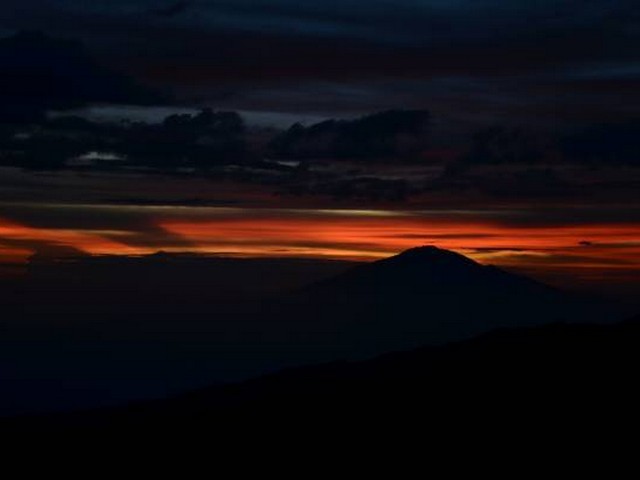Reach for the Sky: Discover the Lemosho Route’s Breathtaking Altitude Profile on Kilimanjaro
Welcome to the Majestic Pathways of Kilimanjaro
Embarking on a journey to climb Mount Kilimanjaro is a dream for many adventurers worldwide. The Lemosho Route, renowned for its stunning beauty and favorable success rates, is a prime choice offered by the Kilimanjaro Centre for Trekking and Ecotourism (KCTE). This blog post will take you through the mesmerizing altitude profile of the Lemosho Route, providing you with essential insights and preparations needed to conquer this majestic mountain.
What Makes the Lemosho Route Exceptional?
The Lemosho Route is more than just a path to the highest peak in Africa; it’s a passage through diverse ecosystems and breathtaking landscapes. Starting from the lush rainforests at Londorossi Gate to the barren moonscapes near the summit, the route offers a rich tapestry of natural wonders. But what truly sets it apart is its altitude profile, designed for optimal acclimatization, making it one of the preferred routes for those aiming to reach the summit successfully.
Understanding the Altitude Profile of the Lemosho Route
The Gradual Ascent: A Strategic Approach
The Lemosho Route’s altitude profile is thoughtfully laid out to enhance climbers’ acclimatization. Spanning approximately 70 kilometers, this route is typically completed in 7 to 8 days, allowing your body to adjust to the increasing elevations gradually.
Initial Days: Entering the Highlands
Starting at an altitude of about 2,350 meters at Londorossi Gate, the trek begins gently. The first campsite, Mti Mkubwa (Big Tree Camp), sits at 2,780 meters. This initial phase through the rich forest zone helps trekkers ease into the climbing experience, surrounded by the calls of exotic birds and the occasional glimpse of wildlife.
Mid-Trek: The Shira Plateau
As you progress, the trail leads to the expansive Shira Plateau, with an elevation ranging from 3,500 to 3,850 meters. This flat caldera provides a momentary respite from the steep climbs and a spectacular panoramic view that stretches to the horizon, priming your spirit and body for the challenges ahead.
Approaching the Arctic Zone
From the Shira Plateau, the journey continues upwards through the Barranco Wall and Karanga Valley, sites where altitude gains are significant, and each step brings you closer to the arctic conditions near the summit. Reaching Barafu Camp at approximately 4,670 meters marks the preparation phase for the summit attack.
Summit Night: The Final Ascent
The most thrilling yet demanding part of the trek is the night ascent to Uhuru Peak, the summit of Kilimanjaro, at about 5,895 meters. Starting typically around midnight, this segment challenges even the seasoned climbers but rewards them with a sunrise view from the roof of Africa that is absolutely unforgettable.
Tailoring Your Trek for Success
Acclimatization Days: Key to Conquering Kilimanjaro
KCTE recommends incorporating additional acclimatization days into your trek. These extra days allow for shorter walks and rest days distributed strategically along the route to enhance your body’s adjustment to high altitudes.
Professional Guidance and Support
Our expert guides at KCTE are seasoned mountaineers trained in wilderness first aid and acute mountain sickness (AMS) awareness. They are the guardians of your journey, ensuring safety, offering encouragement, and sharing insights about the mountain’s history and ecology.
Why Choose KCTE for Your Kilimanjaro Adventure?
Selecting the right tour operator is crucial, and at Kilimanjaro Centre for Trekking and Ecotourism, we pride ourselves on providing superior service, ethical practices, and a profound commitment to the environment. Our tailored Lemosho Route packages are designed to offer an immersive experience, promising not just a climb but a journey of personal discovery and adventure.
FAQs About Climbing Kilimanjaro via the Lemosho Route
What is the best time to climb Kilimanjaro using the Lemosho Route?
The best times are during the dry seasons, from January to mid-March and from June to October. These periods offer the most favorable weather conditions for trekking.
How fit do I need to be to embark on this route?
While you don’t need to be an elite athlete, a good level of fitness is required. It’s advisable to engage in preparatory hikes and cardiovascular training months before your trip.
What should I pack for the Lemosho Route?
Essential items include thermal layers, waterproof gear, a sleeping bag suitable for low temperatures, sun protection, and a comfortable backpack. Don’t forget your camera to capture the stunning vistas!
Are there any age restrictions for climbing Kilimanjaro on the Lemosho Route?
There are no official age restrictions, but the physical demands of the climb usually make it suitable for individuals from the age of 12 and above, with proper preparation and a fit health status.
Conquer Your Dreams with KCTE
Embarking on the Lemosho Route with the Kilimanjaro Centre for Trekking and Ecotourism isn’t just about reaching the summit; it’s about embarking on a life-changing adventure that tests the limits of your body and spirit. Ready to conquer Kilimanjaro and discover yourself in the heart of Africa? Contact KCTE today, and let’s turn your dream into a breathtaking reality!
Climb with us, where every step counts, not just towards the summit, but towards a greater understanding of this magnificent landscape and of yourself. Join us on an unforgettable journey; book your Kilimanjaro climb with KCTE now!




